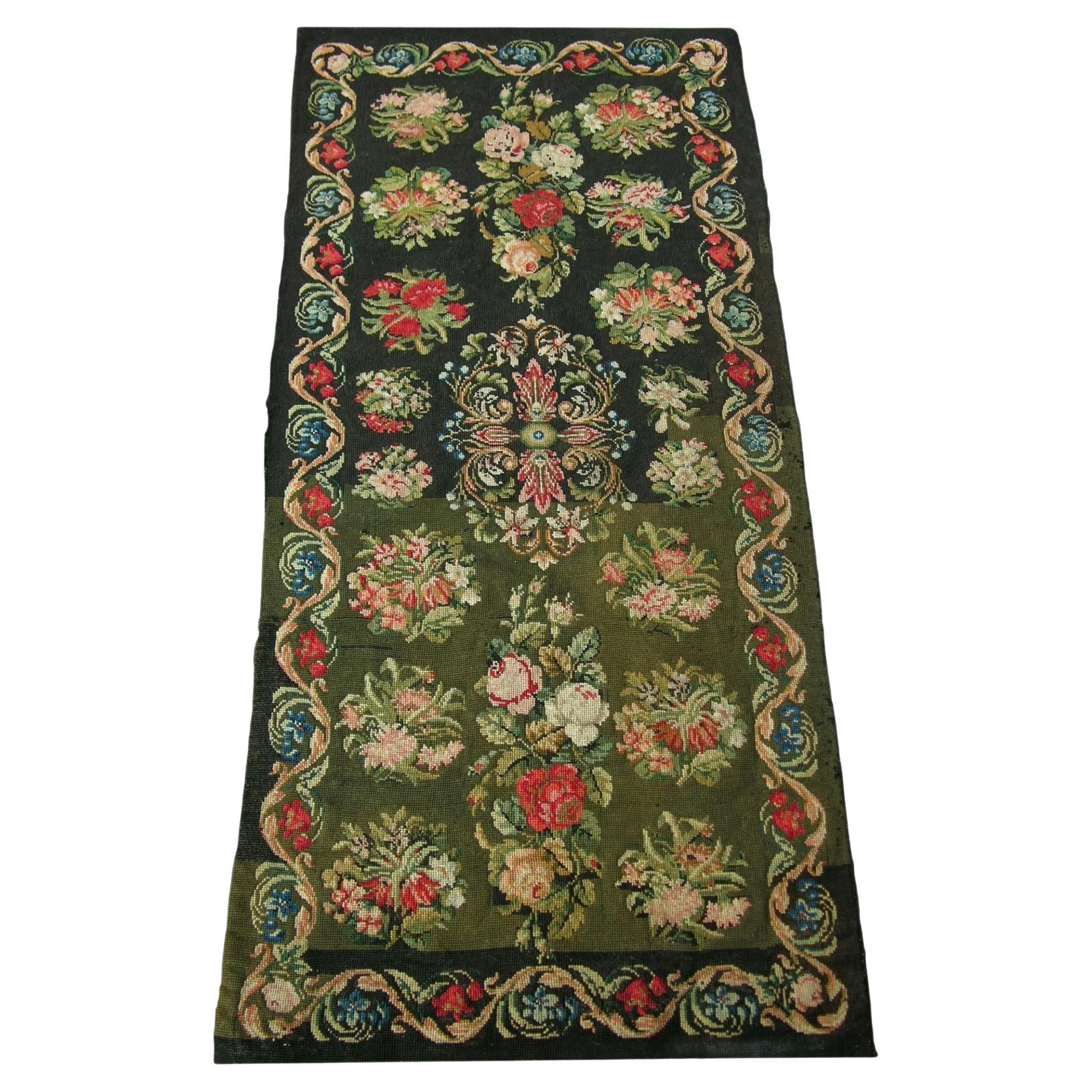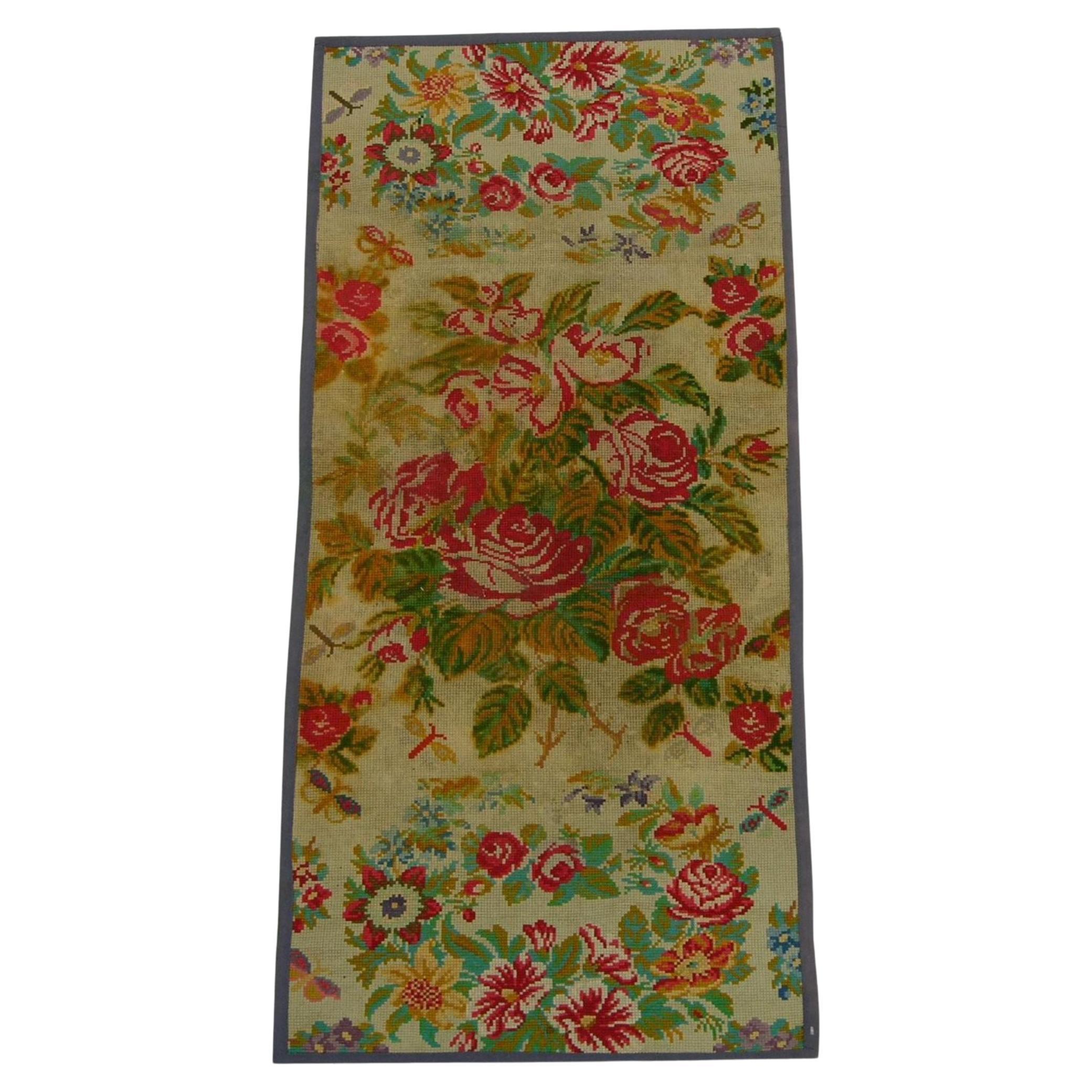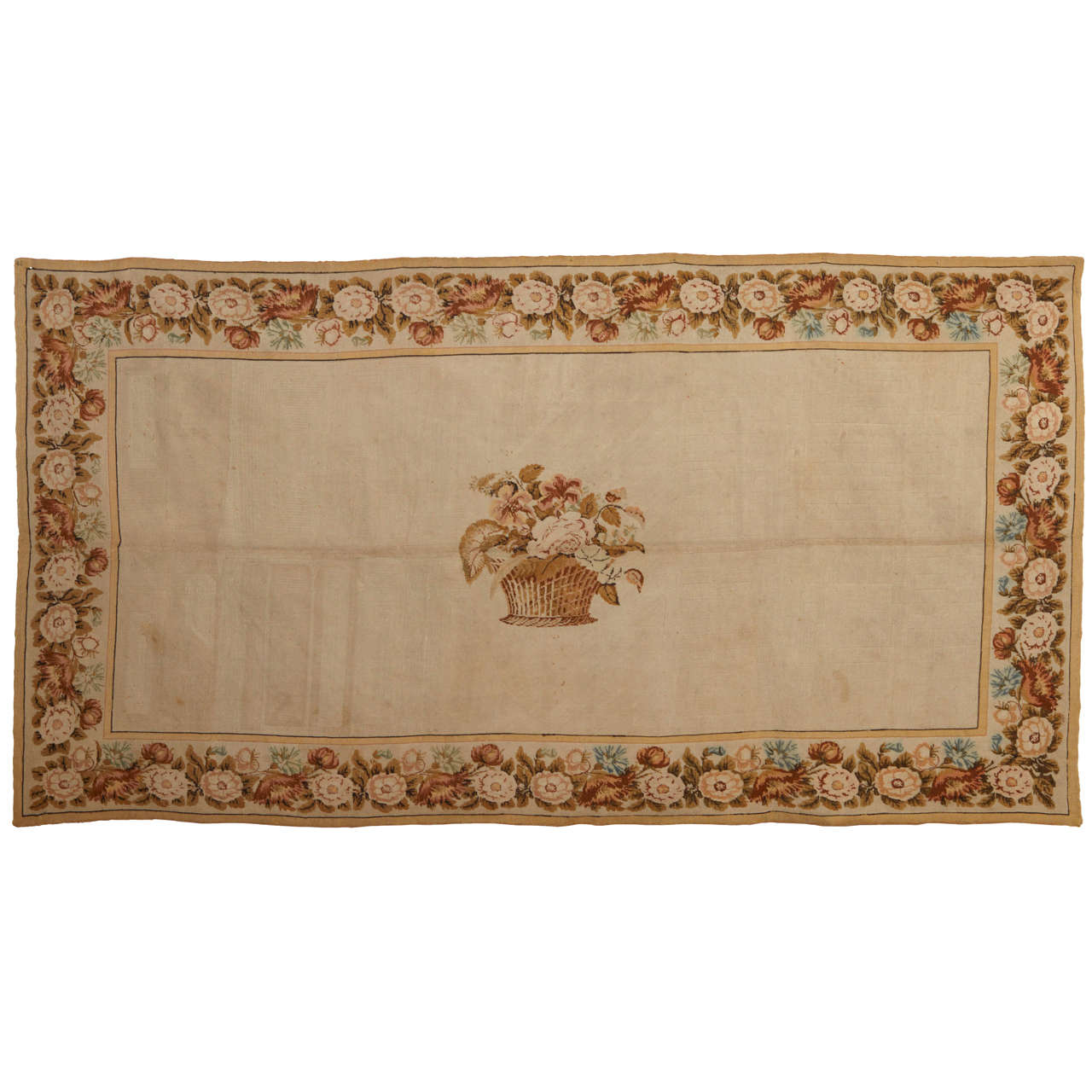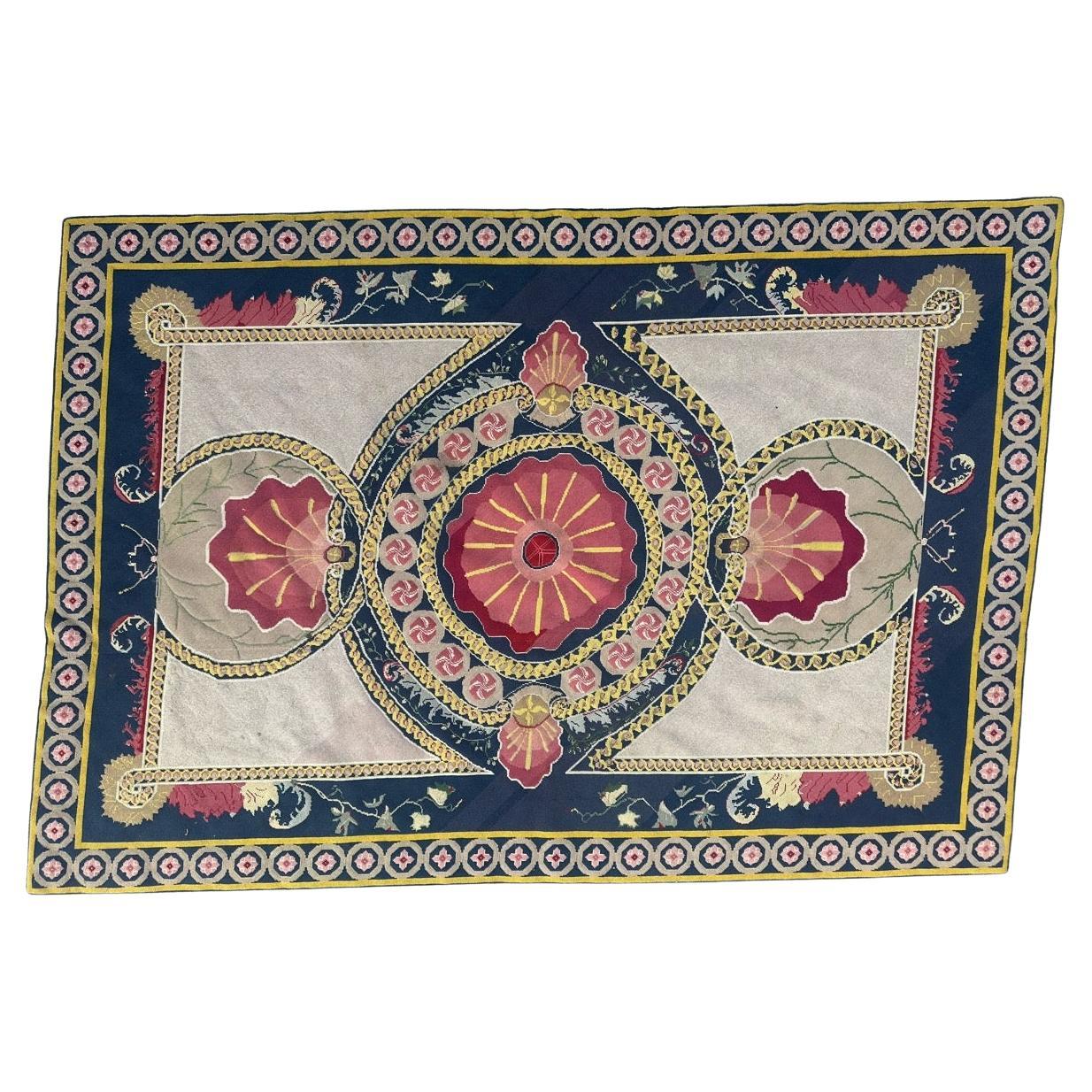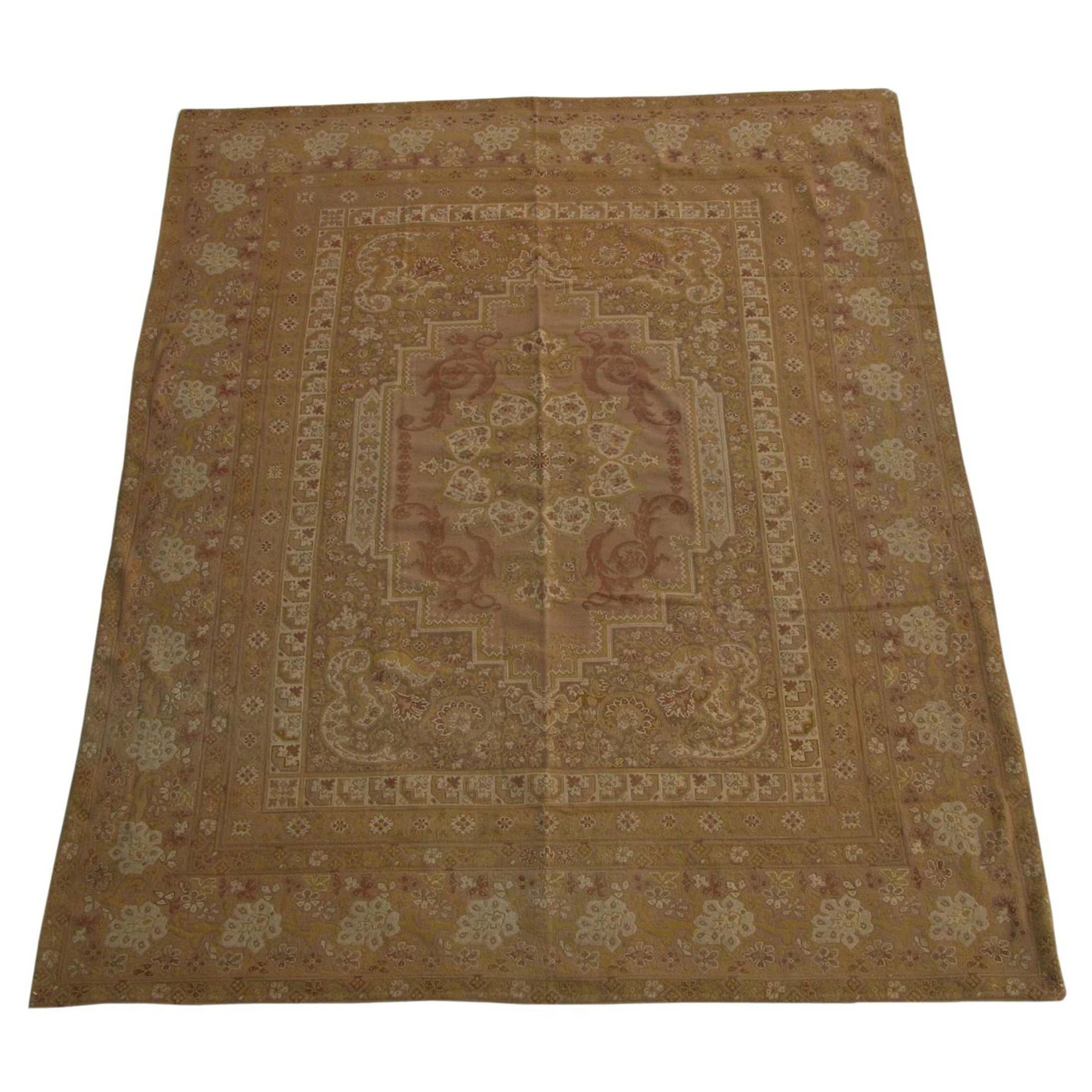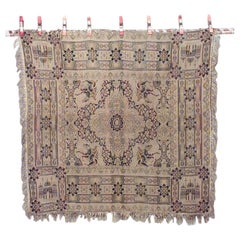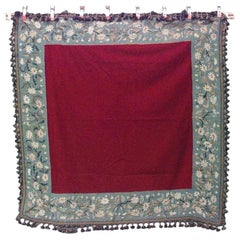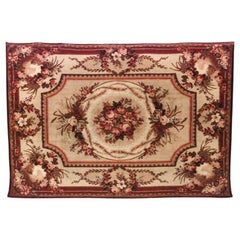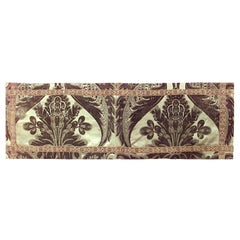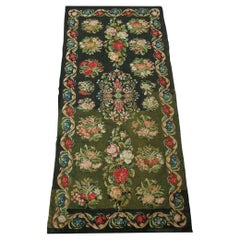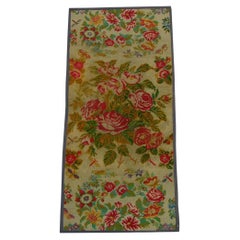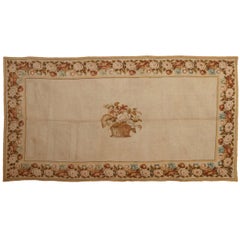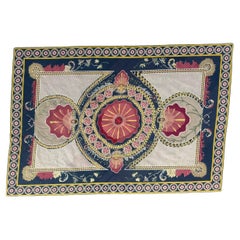Items Similar to English Victorian Needlepoint Table Cover
Want more images or videos?
Request additional images or videos from the seller
1 of 3
English Victorian Needlepoint Table Cover
$2,850
£2,163.67
€2,474.78
CA$3,981.86
A$4,428.70
CHF 2,312.53
MX$53,892.58
NOK 29,534.54
SEK 27,698.19
DKK 18,470.22
Shipping
Retrieving quote...The 1stDibs Promise:
Authenticity Guarantee,
Money-Back Guarantee,
24-Hour Cancellation
About the Item
English Victorian beige and green needlepoint table cover with red floral design and gold fringe
- Dimensions:Width: 53 in (134.62 cm)Depth: 69 in (175.26 cm)
- Style:Victorian (Of the Period)
- Materials and Techniques:Fabric,Needlepoint
- Place of Origin:
- Period:
- Date of Manufacture:Circa 1890
- Condition:Wear consistent with age and use.
- Seller Location:Queens, NY
- Reference Number:Seller: 055155D1stDibs: LU977940742232
About the Seller
4.9
Recognized Seller
These prestigious sellers are industry leaders and represent the highest echelon for item quality and design.
Platinum Seller
Premium sellers with a 4.7+ rating and 24-hour response times
Established in 1939
1stDibs seller since 2013
981 sales on 1stDibs
Typical response time: <1 hour
- ShippingRetrieving quote...Shipping from: Long Island City, NY
- Return Policy
Authenticity Guarantee
In the unlikely event there’s an issue with an item’s authenticity, contact us within 1 year for a full refund. DetailsMoney-Back Guarantee
If your item is not as described, is damaged in transit, or does not arrive, contact us within 7 days for a full refund. Details24-Hour Cancellation
You have a 24-hour grace period in which to reconsider your purchase, with no questions asked.Vetted Professional Sellers
Our world-class sellers must adhere to strict standards for service and quality, maintaining the integrity of our listings.Price-Match Guarantee
If you find that a seller listed the same item for a lower price elsewhere, we’ll match it.Trusted Global Delivery
Our best-in-class carrier network provides specialized shipping options worldwide, including custom delivery.More From This Seller
View AllEnglish Victorian Beige Patterned Table Cover
Located in Queens, NY
English Victorian square beige woven table cover with desert horsemen and mosque motifs and fringe
Category
Antique Late 19th Century British Victorian Curtains and Valances
Materials
Fabric
American Victorian Maroon and Blue Needlepoint Table Cover
Located in Queens, NY
American Victorian table cover with solid maroon velvet field surrounded by blue needlepoint border with daisies design and tassel fringe
Category
Antique Late 19th Century American Victorian Curtains and Valances
Materials
Velvet
American Victorian Beige and Maroon Velvet Table Cover
Located in Queens, NY
American Victorian beige and maroon velvet table cover with floral/roses design and wreath border
Category
Antique Late 19th Century American Victorian Curtains and Valances
Materials
Velvet
American Victorian Green Silk and Velvet Table Runner
Located in Queens, NY
American Victorian green silk and cut velvet table runner with border.
Category
Antique Late 19th Century American Victorian Curtains and Valances
Materials
Velvet
English Victorian Late 19th Century Foliate Tapestry
Located in Queens, NY
English (19th/20th century) vertical tapestry with blue/green/beige foliate design.
Category
Antique 19th Century British Victorian More Carpets
Materials
Wool
French Victorian Brown and Beige Hanging Table Cover
Located in Queens, NY
French Victorian beige, brown, & red velvet table cover hanging with oval centered floral medallion with a border on edge.
Category
Antique Late 19th Century French Victorian Curtains and Valances
Materials
Velvet
You May Also Like
1920s Antique Needlepoint Runner
Located in Los Angeles, US
Needlepoint rugs were created using the traditional needlework weaving technique that is used to make everyday items from furniture to carpets and artwork. However, it has a fascinat...
Category
Vintage 1920s Other Russian and Scandinavian Rugs
Materials
Wool, Cotton
1920s Antique Needlepoint Runner
Located in Los Angeles, US
The technique for creating needlepoint rugs and other objects made from needlepoint has remained unchanged since its beginnings in the 17th century. It all begins with a canvas with ...
Category
Vintage 1920s Other Russian and Scandinavian Rugs
Materials
Wool
Fine Antique English Needlepoint Rug
Located in Milan, IT
A refined English needlework distinguished by the horizontal arrangement of a centralised motif, this being composed of a delicately rendered floral bouquet in a basket on an ivory o...
Category
Antique 1890s British Victorian Western European Rugs
Materials
Wool
Nice Antique Needlepoint European Rug Tapestry
Located in Saint Ouen, FR
Beautiful mid century European (probably french) needlepoint tapestry or rug, with a design of antique French savonnerie rugs in the style of Louis XVI (the 16th) and beautiful color...
Category
Mid-20th Century French Aubusson Western European Rugs
Materials
Wool, Cotton, Silk
$2,492 Sale Price
20% Off
1900s Antique French Needlepoint Rug
Located in Los Angeles, US
Needlepoint rugs were created using the traditional needlework weaving technique that is used to make everyday items from furniture to carpets and artwork. However, it has a fascinating history both as a hobby and as an industry. When many people think of carpets, they think of pile carpets or flat weave kilims, but needlepoint has also been used to create beautiful carpets. These carpets are durable and an important part of carpet history.
Archaeologists and scholars consider the roots of needlepoint to have been around 1500 BC. They consider the first needlepoint to include the fine diagonal stitches that were used to sew tents together by the ancient Egyptians. The art eventually evolved into tapestry weaving. However, a tapestry weaving differs significantly from needlepoint in that it uses a loom and vertical warp.
Tapestry weaving is closer to the weaving of kilims and pile rugs than canvas work. However, some still include tapestry weaving in the category of needlepoint because of the fine work that appeared during the late Renaissance. It can have a similar appearance to the untrained eye. Technically, tapestry weaving and needlepoint are not the same, and they do not use the same technique.
The first actual needlepoint rugs and needle-points began to appear in the late Renaissance. Needlepoint is worked by creating stitches on a stiff canvas. The canvas is typically made from jute or linen and is quite durable. Pieces from the Renaissance were used to cover footstools, chairs, pillows, bed headboards, and other furnishings. They were also used as table coverings and wall coverings. You could also find them on many small items such as purses, shoes, and various adornments for clothing.
During the Renaissance, the craft reached a high level of skill, and the designs became incredibly detailed and realistic. They mimicked many of the subjects and styles of famous paintings of the time. They created florals, still life designs, scenes, and geometric tiled pieces. Some of them mimicked the designs found in Persian Carpets.
Needlepoint reached its peak popularity in the 19th century when it was considered a proper occupation for a lady. Needlepoint and embroidery held a similar place in societal status at the time. During this time, the work became finer, with some of the canvas reaching a high level of detail. The level of detail is determined by counting the number of mesh in an inch. During this time petit point by French needlewomen could have a mesh count as high as 45 mesh. This allowed women to create highly intricate designs with incredible levels of detail.
It is possible to find many antique pieces of needlepoint besides rugs. Needlepoint rugs were popular in France and Spain, where the technique was adapted to create highly intricate designs that mimicked the designs in architecture and fashion. They were popular because they were durable, and it could be fashioned into a variety of items. The canvases themselves were durable, and the wool that they used was also strong, which means that many of the pieces were able to withstand daily use. We have many artifacts that have survived from this time period.
Needlepoint rugs are important collectibles because they are different from the pile rugs and kilims that are typically found on the market. Needlepoint carpets are special because they take many hours to create, especially larger works. Needlepoint pieces of any type became popular throughout Europe during the 19th century. It is still a popular hobby today, but perhaps one of the most interesting stories is that of the Portuguese needlewomen of Arraiolos.
The story of these women and their beautiful carpets begins in 1492. Needlepoint was a popular occupation in Spain, which had a large population of Moors and Jews. They were an integral part of Spanish culture. However, in 1492, Queen Isabella of Spain issued a proclamation that gave these ethnic groups the order to pack their bags and board ships headed...
Category
Antique Early 1900s Other Russian and Scandinavian Rugs
Materials
Wool, Cotton
Antique Victorian English Needlepoint Rug, circa 1860
Located in Milan, IT
A charming needlepoint rug distinguished by an infinite repeat pattern of floral bouquets alternated by offset parallel rows of leafy roundels. English needlepoints such as this one ...
Category
Antique 19th Century English Victorian Western European Rugs
Materials
Wool
More Ways To Browse
English Fabric
Victorian Fabric
Antique Needlepoints
English Needlepoint
Needlepoint Fabric
Victorian Needlepoint
Antique Victorian Needlepoint
Needlepoint Valance
Curtains Brocade
Pair Of Pelmets
Vintage Curtains Drapes Curtains And Drapes
Antique Bronze Curtain Tie Backs
Vintage Art Deco Curtains
Antique Curtain Rods
Antique Wood Valance
Brass Curtain Tie Backs
Tassel Tiebacks
Velvet Drapes Curtains
